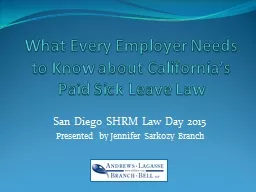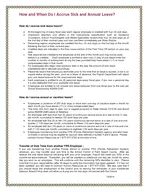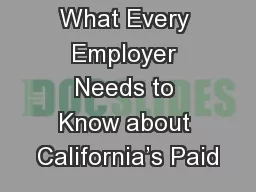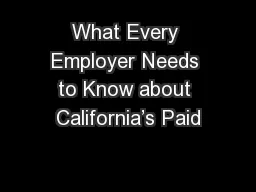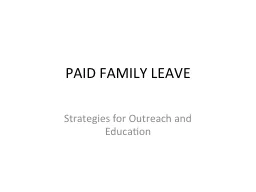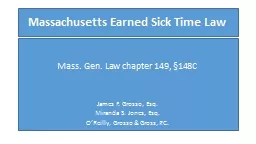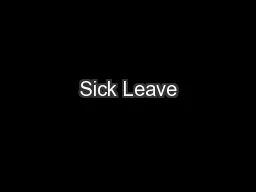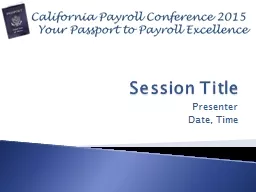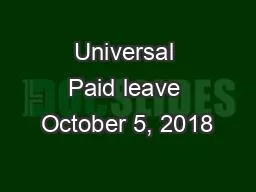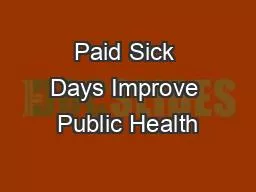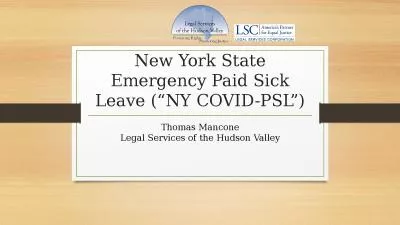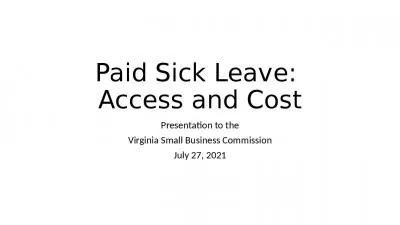PPT-What Every Employer Needs to Know about California’s Paid Sick Leave Law
Author : sherrill-nordquist | Published Date : 2018-11-21
San Diego SHRM Law Day 2015 Presented by Jennifer Sarkozy Branch More cities and states are requiring employers to give workers paid sick days The Healthy Workplaces
Presentation Embed Code
Download Presentation
Download Presentation The PPT/PDF document "What Every Employer Needs to Know about ..." is the property of its rightful owner. Permission is granted to download and print the materials on this website for personal, non-commercial use only, and to display it on your personal computer provided you do not modify the materials and that you retain all copyright notices contained in the materials. By downloading content from our website, you accept the terms of this agreement.
What Every Employer Needs to Know about California’s Paid Sick Leave Law: Transcript
Download Rules Of Document
"What Every Employer Needs to Know about California’s Paid Sick Leave Law"The content belongs to its owner. You may download and print it for personal use, without modification, and keep all copyright notices. By downloading, you agree to these terms.
Related Documents

